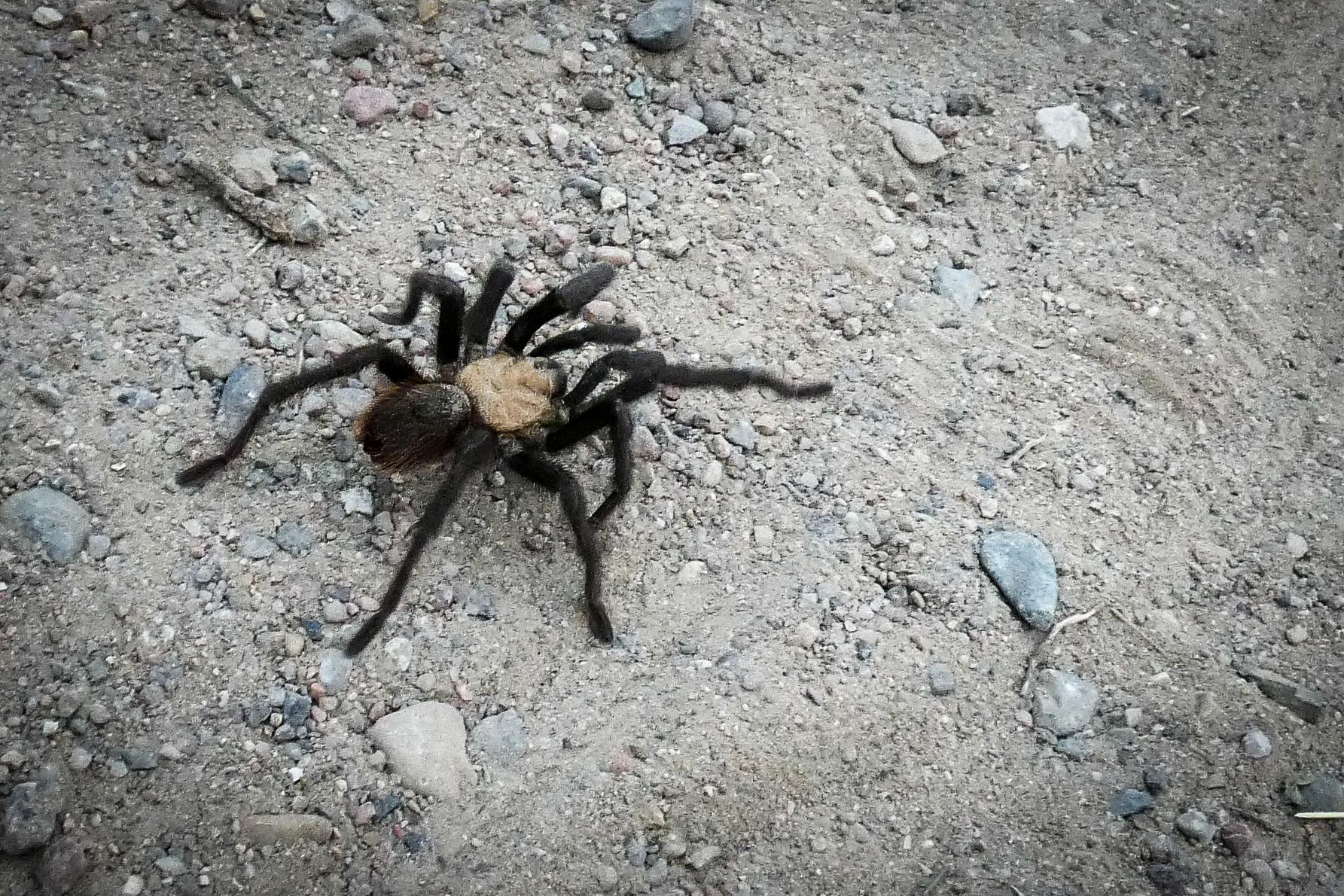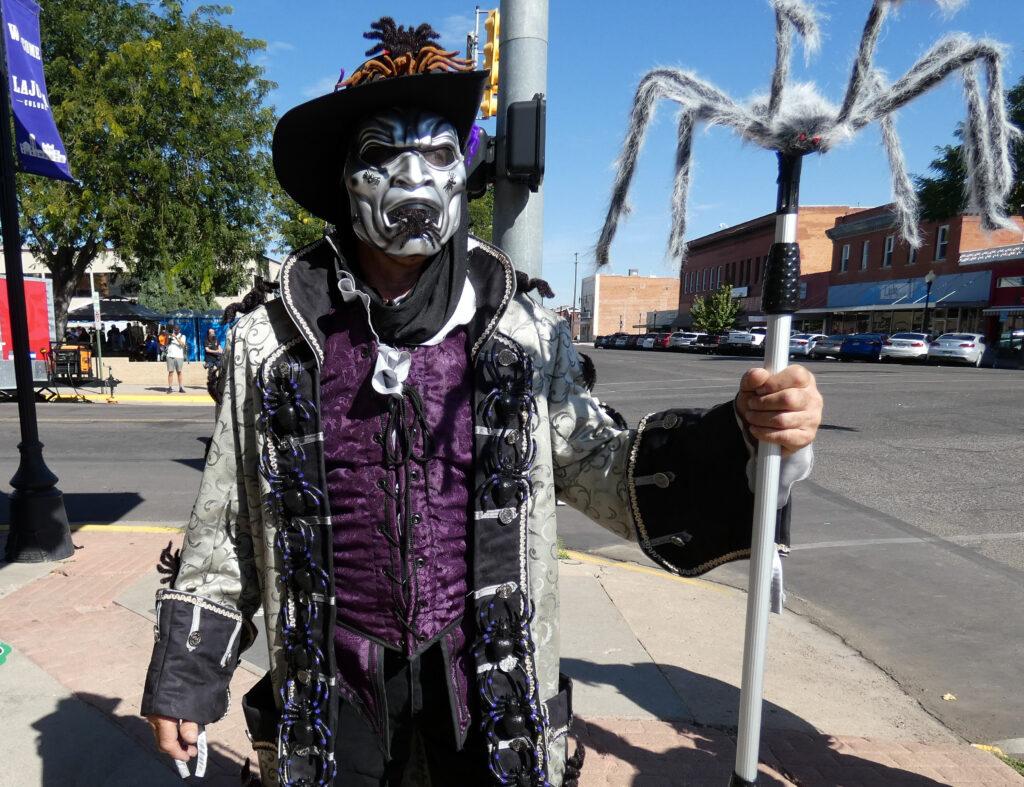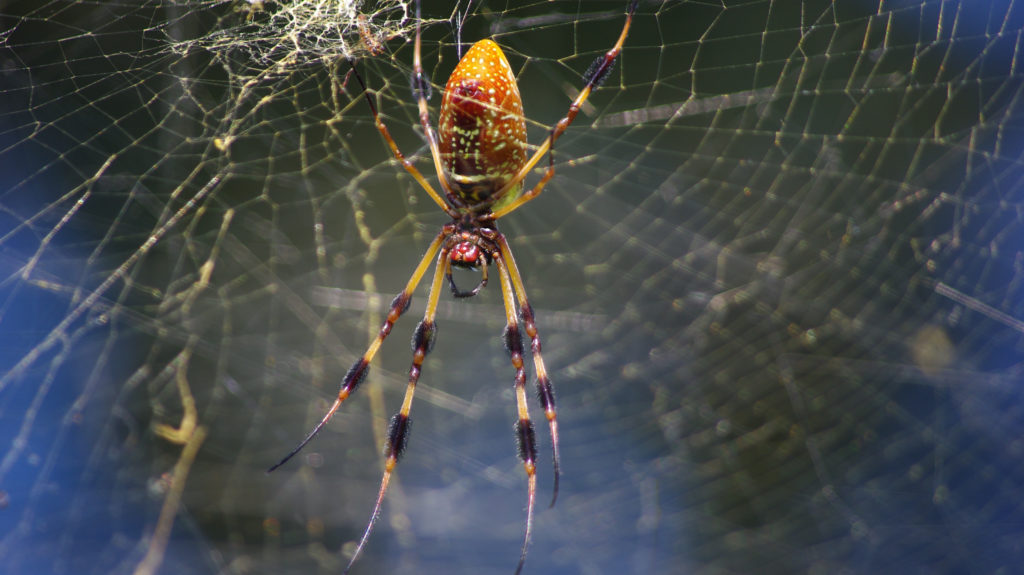
As tarantula mating season is winding down around La Junta, Halloween season is ramping up.
KRCC’s Shanna Lewis spoke with arachnologist Paula Cushing of the Denver Museum of Nature and Science recently at the Tarantula Festival in La Junta. They chatted about the love lives of tarantulas and other spiders, their role in the ecosystem, whether their bites are dangerous and more.
Highlights from the conversation, which has been edited for clarity and length.
Tarantulas roam the range in southeastern Colorado
We have these large hairy tarantulas just in the southeastern part of the state. And once you go south of Colorado, you pick up more species, but we just have the one species here in the southeastern part of the state. We have some other tarantula-like spiders in the western part of the state, but in terms of the big hairys, this is the place to go.
Southeastern Colorado isn’t the most spider-friendly environment
It's not super conducive to arthropods, which are arachnids and insects, because most of Colorado is a semi-desert ecosystem, particularly the Front Range, it's a xeric environment. Where you start to pick up a huge amount of diversity is as you get into the tropics, the subtropics and the tropics where moisture is readily available. The vegetation is thicker and more rich. So it's not a hugely species-diverse area, but documented between 600 and 700 different species of spiders that live in Colorado.
If you spot a big hairy spider around here it's likely a tarantula
In the southeastern part of the state, especially this time of year in the late summer or early fall, it's a good bet that a big hairy spider wandering around is a tarantula. But there are some huge species of wolf spiders that we have north of Colorado Springs, out in the plains. In the Golden area, I've seen really large wolf spiders and even fishing spiders that get very, very large. And to the arachno-neophyte, those big wolf spiders might appear to be tarantulas. But if you look closely, they're not as covered with hair-like setae (bristles formed from the exoskeleton of the spider) as our Colorado Brown Tarantula is. Only mammals have hair. Spiders have something that looks like hair, but it's setae. It's the tarantulas that really have the most beautiful, hairy legs, I would say.
Tarantulas on the move in the grasslands of Southeastern Colorado have their own courtship rituals
All spiders have their own specialized courtship and copulation behavior. The tarantulas don't have great eyesight. The males, which I’ve got to say are kind of dumb as dirt, I'm surprised that they can even find females, they just stumble around and hopefully run into a female, seemingly at random. When they do finally encounter a female or get close to her burrow, we think what they can pick up is some sexual pheromones that she's deposited in her silk. So then you can see him get kind of excited and he gets closer and then he'll do some vibratory courtship. But his courtship signals are going to be species-specific, so she would be able to tell that those vibrations are from a male of her species.
If you look at other species of spiders, like jumping spiders for example, they have great eyesight and they will dance for their lady loves. So the males are really showing off to the females and the females can pick and choose who's got the best dance moves. So every species has their own behavioral repertoire that they use to find mates.

Is climate change having any effect on tarantulas in southeastern Colorado?
We don't really know. The interesting thing is there's so few professional arachnologists in the world that we are struggling to get basic information about population size, population health, species distributions, in order to ask basic questions about how not only climate change is affecting species, but also how is habitat degradation affecting them? How is urbanization affecting them? So it is beyond just climate change. What we suspect might be happening for these tarantulas is based purely on anecdotal observations of folks living in this area of Colorado, that their range may be extending northward a little bit.
Other spider facts
You might be surprised by how much spiders eat
Spiders in general, including the tarantulas, are incredibly important major predators of insects. A paper came out a few years ago that estimated that the worldwide population of spiders was eating 400 to 800 million tons of insects every year. They estimated that the human population is only eating about half that amount of protein. So spiders are eating a ton of insects. They're incredibly important in controlling insect populations and tarantulas are doing the same thing.
In these grassland ecosystems where we find the Oklahoma Brown or Colorado Brown tarantula, they're doing the same thing. They're eating insects primarily, but if an animal’s vertebrae is small enough, they'll also eat them. So they're a part of that community ecology of that grassland ecosystem.If you don't want to get a bunch of pesky insects in and around your home, leave the spiders alone.
What spiders are poisonous?
When people call me up at the museum and say, “I found a spider (including tarantulas) in my house. Is it poisonous?” What they really mean is, is it venomous? And the answer to that is largely yes. The vast, vast, vast majority of species of spiders are all venomous. They all have venom because they use that venom to immobilize the insect prey. But what callers really mean is does it have venom that's harmful to humans? And the answer to that is largely no. And that includes the Colorado Brown. Because their fangs are certainly large enough that they would give you a good whopping piercing. You would definitely feel those large fangs and the venom, if they inject the venom, it's going to hurt, but it's probably like a bee sting and that pain is going to dissipate after probably 10-20 minutes.
There are over 51,000 described species of spiders on the planet right now. Of those, there's only a handful that have venom that's harmful to humans. Their venom didn't evolve to eat us or to take us down. It evolved to take down an insect. Insects and insect physiology is very different than human physiology.
I won't lie to you, a spider bite will hurt wherever it's bitten you. But that pain will dissipate usually after some minutes. There’s nothing to worry about and everything to protect, the spiders are your friends.

Black widow bites can be nasty, but probably won’t kill you
In Colorado in general, the only spider we have that has venom of medical concern to humans is the western black widow. It can cause you pretty severe painful symptoms for a healthy adult, but it's probably not going to kill you. You might wish you were dead, but it's unlikely to kill you unless you're very young, very old, immunocompromised or have other risk factors. If you're a healthy adult and get bitten by a black widow, oftentimes the bite is dry, with no symptoms whatsoever. If they do inject venom, then it can cause severe, painful symptoms throughout the body, hardening of the stomach muscles which feels like somebody's been kicking you in the gut over and over, pain in the lymph nodes and joints, facial contortion, sweating, and hypertension.
There is anti-venom available, but some people are allergic to it. So sometimes the medical professional, seeing an adult healthy human who has been bitten by a black widow will give pain meds just to tamp down the painful symptoms, knowing that even untreated it will typically go away after about 48 hours.
(She also notes that we do not have recluse spiders, another spider with potentially concerning bite, naturally occurring in Colorado. Here’s more information about recluse spiders from CSU Extension)
Don't grab them and don't squeeze them because that's when bites occur. They're very timid. If you see a black widow and you brush against its web, it's going to run away. We're giants, they're not going to come after us, they're not going to go for our jugular. Bites might occur when the spider is hiding underneath a log, underneath your potted plant, or some other object and you don't realize it's there. You pick that object up and you accidentally trap the spider and it bites in defense. It's sort of a last-ditch effort. But in general, the spiders do not want to waste a metabolically expensive component of their body like venom on something they can't eat, even when they are being threatened.









